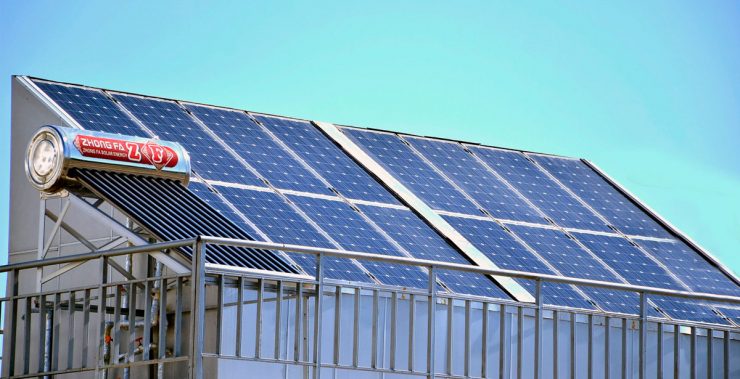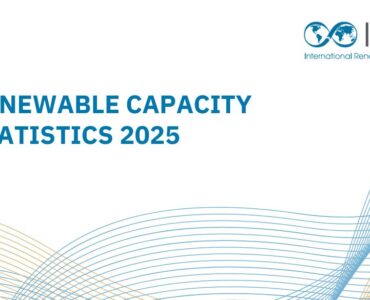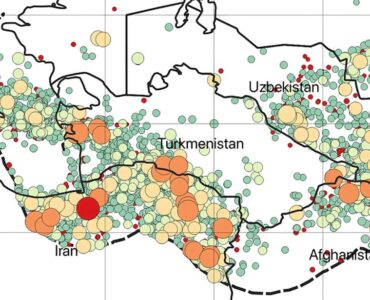Researchers from LUT University in Finland published a study titled “The Value of Fast Transitioning to a Fully Sustainable Energy System: The Case of Turkmenistan”, led by a researcher from Turkmenistan, that takes a close look at the current energy system of Turkmenistan and presents possible pathways for transitioning to 100% renewable energy sources.
The takeaways:
- Turkmenistan’s lack of national plan towards concrete sustainability targets is alarming and should be addressed immediately. The current business as usual case is unsustainable.
- The study provides potential transition scenarios to full sustainability in Turkmenistan in power, heat, and transport sectors. Seven transition scenarios have been analyzed to demonstrate different possible paths in a cost-efficient way.
- Transitioning to 100% renewables would require upwards of 79 GW of solar PV and 7 GW of wind capacity installations, which would require less than 0.4% of total land area of Turkmenistan.
- The results of the study demonstrate that a 100% renewable energy system will be lower in cost than a continual reliance on fossil fuels.
- There is an urgent need to study the energy system of Turkmenistan from different perspectives with more granular data. Decision-makers in Turkmenistan should strongly consider enabling investments in renewable energy through legislation, as this enhances the welfare of the country and its citizens.
- The example of Norway may be a blueprint for the government of Turkmenistan: achieving highest levels of renewable energy utilization for domestic lowest cost energy supply, while maximizing exports of fossil gas to laggard countries in the energy transition.
Turkmenistan and climate change
Turkmenistan is among the many nations that have ratified the Paris Agreement intended to mitigate the adverse effects of greenhouse gas (GHG) emissions to limit global warming. Global warming stopped being a threat in a distant future but is a reality today all over the world. People in Turkmenistan can already experience the effects of global warming with record setting scorching temperatures every year and an intensification in frequency of extreme weather events, with heavy storms in Lebap and salt storms in Dashoguz.
Unified action against climate change requires the cooperation of all nations with no exceptions, and Turkmenistan cannot continue heavily relying on fossil fuels. There is a drastic need to reduce the reliance on fossil fuels and to switch to clean sources of energy. Fortunately, vast deserts of Turkmenistan are not only rich in fossil fuels but they are also blessed with enormous renewable energy resources, such as sun and wind.
However, an energy system that fully relies on fossil fuels cannot be simply replaced with a renewables-based system. Energy system requires a meticulous and gradual approach to transition to renewables in a cost-optimal way. A too rapid switch can leave the country with stranded assets in fossil fuels.
Energy system and resistance to change
The study investigates the current energy system in Turkmenistan, taking into account the electricity demand, installed power capacities and demographics, and models a transition to a 100% renewable-based system in Turkmenistan, considering the solar and wind resources, electricity demand growth projections and possible external pressure to transition away from fossil fuels. Due to the absence of up-to-date and reliable data from state institutions of Turkmenistan, various secondary international sources, databases, fact books and organizations estimations were used as sources of data for this research.
There is insufficient political and social will to change the state of the current energy system in Turkmenistan. Heavily subsidized utilities and lack of awareness have kept citizens unaware regarding the environmental effects of being reliant on fossil fuels.
The current energy system of Turkmenistan fully relies on natural gas and oil. Almost 100% of electricity comes from natural gas power plants, with a small hydropower station in Mary and a few experimental solar PV panels. Practically all vehicles in Turkmenistan are powered by internal combustion engines running on petrol and diesel, including the intercity trains. Electric vehicles are out of reach for the majority of the population and with one of the lowest prices on petrol in the world nobody is incentivized to switch to electric vehicles. While the subsidized electricity and gas has helped to keep the cost of living for people low, they also removed the incentives to more efficiently and conscientiously use energy. The anecdote about people keeping their gas stoves on to save the expenses on matches is all too familiar to many Turkmens. There are also indirect adverse effects of relying on natural gas, mainly the methane leakage. According to the latest satellite observations, Turkmenistan is the number one country in the world in terms of methane leakage, and methane is an even more potent greenhouse gas with a higher warming potential than CO2.
Transition
The results of the study with the fastest rate of transition (with a 5% rate of increasing the capacity share of annual RE integration) show that it would be the lowest cost option for Turkmenistan. It also enables the fastest rate of reduction of GHG emissions. Transitioning to 100% renewables would require upwards of 79 GW of solar PV and 7 GW of wind capacity installations, which would require less than 0.4% of total land area of Turkmenistan. In addition, the system will require flexibility options such as utility-scale batteries and water electrolysers to produce green hydrogen (i.e., hydrogen produced with 100% renewable electricity) for long-term storage of energy.
In theory, the country can install even more renewable electricity generation capacities and continue being an energy exporting country, replacing natural gas with either electricity or synthetic gas to China or India via the TAPI pipeline. The renewable energy technologies also tend to increase the number of jobs in the energy sector that are required to keep the energy system up and running, resulting in another indirect benefit of switching to a 100% RE-based system.
The results of the research are meant as a guide for policy-makers, investors and stakeholders in Turkmenistan for the further development of the energy system. One needs to keep in mind the limitations of the data and the modeling and that the results and the future scenarios are not set in stone. The researchers hope that the study will also serve as a catalyst for further discourse on the prospects of renewable energy in Central Asia in general and in Turkmenistan in particular.
Rasul Satymov
The source of pıcture






